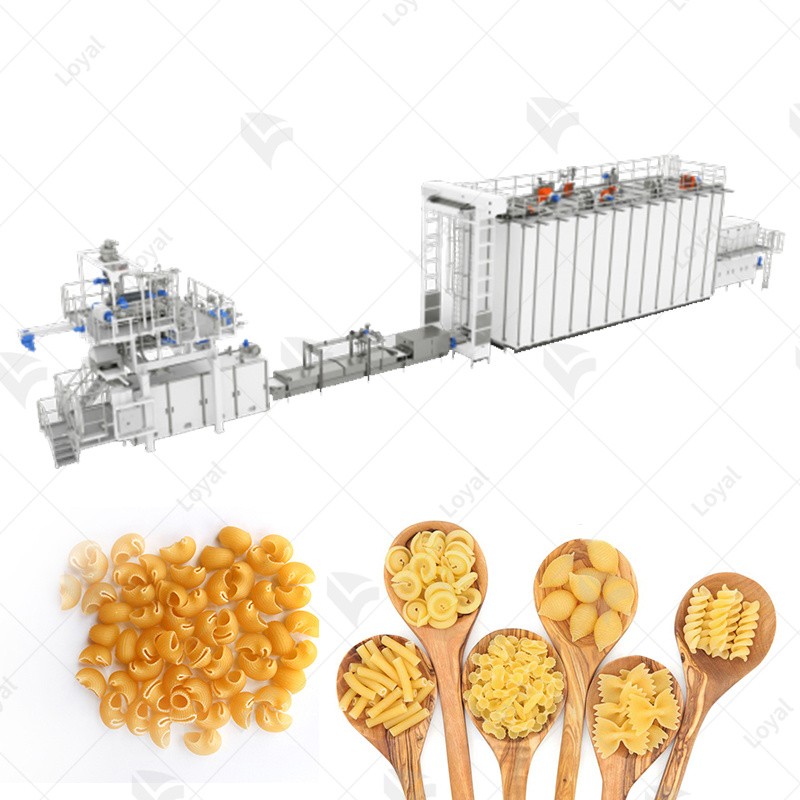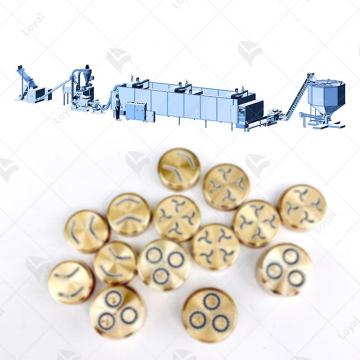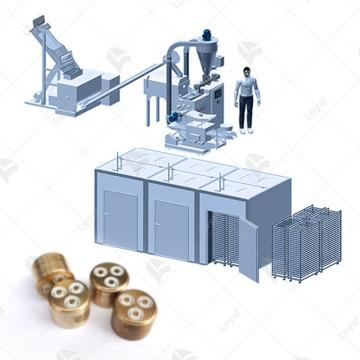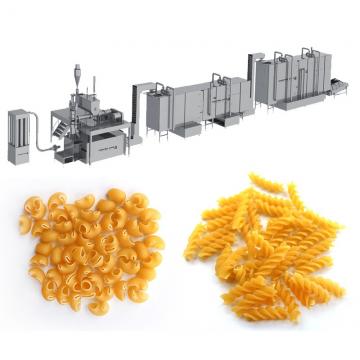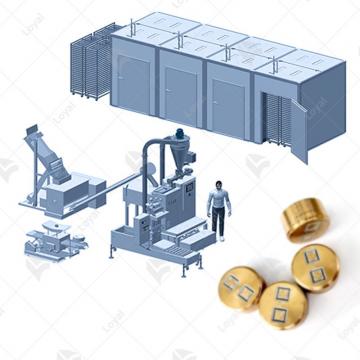Elevate Your Production with a Fully Automatic Long Cut Pasta Production Line: Maximizing Efficiency and Energy Conservation
Elevate Your Production with a Fully Automatic Long Cut Pasta Production Line: Maximizing Efficiency and Energy Conservation
Introduction
Shandong Loyal Industrial Co., Ltd. has incorporated advanced technologies from HEMAKS and Capitanio in the production of its macaroni.The pasta industry is undergoing a remarkable transformation, propelled by advancements in technology and a growing demand for efficiency and sustainability. This article delves into the realm of fully automatic Long-Cut Pasta Production Line, exploring how they elevate production standards while maximizing efficiency and conserving energy.

Technological Excellence
In recent years, the pasta manufacturing landscape has witnessed significant technological advancements. The integration of automation has played a pivotal role in achieving unparalleled efficiency gains. According to industry experts, including renowned figures from Barilla, Banza, Jovial, San Giorgio, Great Value, Ronzoni, and "La Molisana," the adoption of fully automatic systems is crucial for staying competitive and meeting the demands of modern consumers.
As Barilla, a frontrunner in the industry, highlights, the integration of automation goes beyond mere technological advancement; it represents a strategic move towards ensuring consistency and precision in the pasta production process. Automation allows for real-time monitoring and adjustment, ensuring that each batch meets the high-quality standards set by the brand. This endorsement from industry leaders underscores the transformative impact of automation on the efficiency and quality benchmarks within the pasta manufacturing domain.
Components of Fully Automatic Production Line
The key components of a fully automatic long cut pasta production line encompass comprehensive automation in mixing and kneading, precision extrusion techniques, and innovations in drying and packaging processes. Barilla, a leading brand in the pasta industry, emphasizes the precision achieved through automated extrusion, ensuring consistent quality in every batch.
In the mixing and kneading phase, automation ensures a homogenous blend of ingredients, eliminating variations and guaranteeing uniformity in the pasta dough. Precision extrusion techniques, as advocated by Barilla and other industry leaders, allow for the creation of long cut pasta shapes with exact specifications, meeting consumer preferences with every production cycle. Innovations in drying and packaging processes further contribute to the overall efficiency of the production line, extending the shelf life of the products while maintaining their quality.
Maximizing Efficiency
One of the primary objectives of fully automatic systems is to maximize efficiency. These systems contribute to increased output and productivity, ensuring a seamless production process. Quality assurance measures integrated into automated systems, as advocated by Jovial, further enhance the reliability of the final product. Streamlining processes for operational excellence becomes a cornerstone in achieving heightened efficiency levels.
Jovial, a brand known for its commitment to high-quality pasta, stresses the role of automation in ensuring stringent quality control measures. Automated systems allow for precise monitoring of various production parameters, from ingredient ratios to extrusion speed, ensuring that each batch meets the brand's quality standards. This commitment to quality, coupled with the efficiency gains achieved through automation, positions fully automatic long cut pasta production lines as not only a technological advancement but a strategic imperative for brands aiming to excel in the modern market landscape.

Energy Conservation Strategies
The significance of energy conservation in modern pasta production cannot be overstated. Brands like Banza and San Giorgio are at the forefront of sustainable practices in automated pasta production. Resource-efficient operations not only reduce environmental impact but also position these brands as leaders in responsible manufacturing. A comparative analysis with conventional production methods underscores the environmental benefits of fully automatic systems.
Overcoming Challenges
Addressing potential hurdles in fully automatic systems is an ongoing process. Continuous improvement and adaptability, as highlighted by Ronzoni, are essential for overcoming challenges associated with technological transitions. Understanding market dynamics and consumer demand is crucial in ensuring the seamless integration of fully automatic long cut pasta production lines.
Future Perspectives
Looking ahead, emerging trends in long cut pasta production point towards sustainable innovations that foster industry growth. Industry leaders, including "La Molisana," are actively anticipating market shifts and preferences to stay ahead of the curve. The future of long cut pasta manufacturing lies in the intersection of cutting-edge technology and sustainable practices.
Conclusion
In conclusion, the adoption of a fully automatic long cut pasta production line brings about a myriad of benefits, from increased efficiency to energy conservation. As we summarize the insights provided by industry experts from Barilla, Banza, Jovial, San Giorgio, Great Value, Ronzoni, and "La Molisana," it becomes evident that the future of pasta manufacturing is intricately tied to the seamless integration of advanced technology and sustainable practices. Looking forward, the industry is poised for continued growth and innovation.

Common Questions about Long Cut Pasta Production Line
- What brands endorse fully automatic pasta production lines?
Barilla, Banza, Jovial, San Giorgio, Great Value, Ronzoni, and "La Molisana" are among the leading brands endorsing fully automatic systems.
- How does automation contribute to energy conservation?
Automation in pasta production reduces energy consumption through optimized processes and resource-efficient operations.
3. What challenges may arise in adopting fully automatic systems?
Challenges include technological transitions, which can be addressed through continuous improvement and adaptability strategies advocated by industry leaders like Ronzoni.

